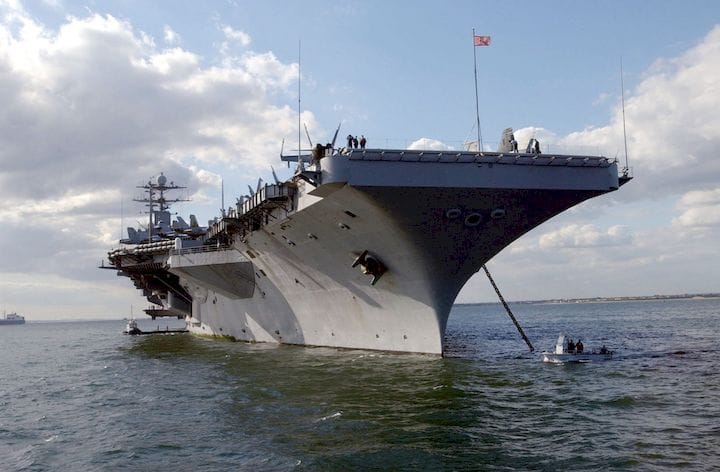![A US Navy carrier is now testing a 3D printed metal part [Source: US Navy Photographer's Mate 3rd Class Danny Ewing Jr]](https://fabbaloo.com/wp-content/uploads/2020/05/image-asset_img_5eb0a40322c62.jpg)
The US Navy is now testing a 3D printed part on one of their carriers, and this shows the enormous hill 3D printing has yet to climb.
The story is that a test is currently underway on the USS Harry S. Truman (CVN 75) in which a “prototype piping assembly” will be installed and carefully observed over a 12-month test period. This type of lengthy experimentation is required to certify the technology for use in the US Navy.
Now at this point you’re probably wondering why the US Navy is so far behind on this technology, as it has been available for many years. 3D printed metal parts are certainly not new; you’ve been able to purchase metal 3D printers for at least a decade.
It’s only now they are testing their very first part? And testing it for an entire year?
What’s the issue here? It’s not like they have nukes. Well, actually they do have nukes, so I can understand a conservative approach might be required.
The truth is that the US military uses a very formal system for introducing new technology: the Technology Readiness Level, or “TRL”. First developed by NASA to certify the many new technologies it had to employ on its missions, the concept has leaked over to other government departments. The original list from NASA includes seven stages:
-
Level 1 – Basic Principles Observed and Reported
-
Level 2 – Potential Application Validated
-
Level 3 – Proof-of-Concept Demonstrated, Analytically and/or Experimentally
-
Level 4 – Component and/or Breadboard Laboratory Validated
-
Level 5 – Component and/or Breadboard Validated in Simulated or Realspace Environment
-
Level 6 – System Adequacy Validated in Simulated Environment
-
Level 7 – System Adequacy Validated in Space
If you read these carefully you can see a couple of things. First, each stage is an incremental step towards the goal of having a known-working solution. Many small steps are achievable, while a giant leap is far more difficult. Hm.
The second thing you will notice is that there are seven steps and that each would require time to execute. Thus this concept, if fully adhered to, would take considerable time to complete. That is perhaps the main reason for the apparent delay in the US Navy adopting metal 3D printing – it has had to go through stage 1 through 6! Only now they have reached stage 7.
One might expect such lengthy processes from government, but the same is often true in private industry, where new concepts must go through similar, but somewhat different stages of progress. In private industry you would likely find additional steps that involve proving financial worth, risk mitigation and revenue stabilization during transition, among other concerns.
While a startup company might “just do it” to begin 3D printing, that is absolutely not the case in almost any large organization, including the US Navy.
That’s why we don’t see massive amounts of metal 3D printing yet.
But.
Once a technology does go through the stages of development to become approved, the gates of use are then wide open and we will see a massive uptake of the technology as designers in these industries take full advantage of the tech.
Via New Atlas











SPEE3D is placing their supersonic 3D printer in the Australian military to test its ability to 3D print metal parts in remote locations.